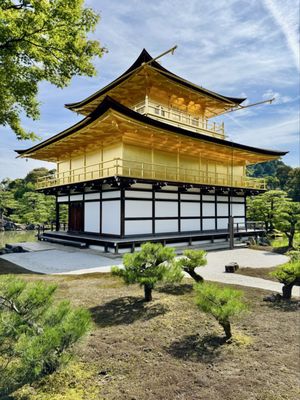Kinkaku-ji
Golden pavilion temple with meticulously manicured gardens
Golden pavilion temple with meticulously manicured gardens
























"Seeing the golden shimmer of Kinkakuji Temple felt like a must‑do in Kyoto—an iconic sight that captures the city’s historic and photogenic charm." - CNT Editors

"One of the city's UNESCO-linked temple sites, this shimmering pavilion and its superb gardens are emblematic of the area's concentration of historic religious architecture and seasonal beauty." - Anne Olivia Bauso Anne Olivia Bauso Anne Olivia Bauso is a travel writer and hotel expert based in New York City. She has written hundreds of hotel reviews, from 5-star Ritz-Carlton properties to treehouse eco-resorts in the jungle. Travel + Leisure Editorial Guidelines

"For a cultural and serene experience, Kyoto offers historical temples, beautiful gardens, and traditional tea ceremonies. It's a perfect choice for couples interested in exploring Japan's rich heritage."

"Famous for its classical Buddhist temples, gardens, imperial palaces, Shinto shrines, and traditional wooden houses. Ideal for couples interested in culture and history."

"Also known as the Temple of the Golden Pavilion, this iconic temple features three distinct architectural styles and a garden based on ancient Chinese writings." - Travel + Leisure Editors